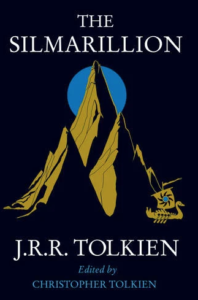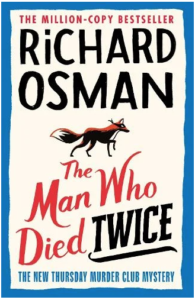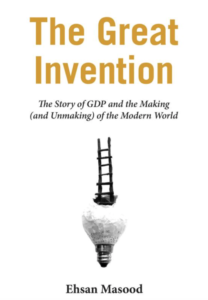This year’s pile of books got off to a promising start, and the ones I’ve read this month will set a high standard for the year. So, here they are, in order of reading.
 J. R. R. Tolkien (ed. Carl Hostetter) – The Nature of Middle-earth. The postmortem publication of J. R. R. Tolkien’s work now far exceeds his output in life (he died in 1972). This is partly due to the fact that Tolkien never threw anything away, but mostly due to the tireless efforts of his son and literary executor Christopher, whose monumental efforts of literary excavation included the 12-volume History of Middle-earth, a collection of drafts, notes and other unpublished marginalia connected with his father’s vast and ever-growing legendarium. Christopher died in 2020, and the seemingly endless task has moved to leading Tolkienist Carl Hostetter, whose Nature of Middle-earth can be seen as Volume 13. In the late 1950s, after The Lord of the Rings was published, Tolkien (sensu J. R. R.) decided to revise fundamental aspects of his invented Universe. By that time the stories that became to be known as The Silmarillion had been revised at least three times and existed in a fairly advanced state. But still he did not rest. He decided to recast essential aspects of the life histories of humans and elves, which would have had important ramifications for the stories at the heart of the legendarium as it then existed. He also decided to re-make the invented world to accord with what we now know of the Universe. So, rather than having the Sun and Moon remade from the final fruits of the Two Trees of Valinor (as they had been hitherto), they would have existed from the beginning as astronomical objects. To my mind this would have been a great shame, and The Silmarillion as published by Tolkien (sensu Christopher) in 1977 adheres to the older (and, by now, canonical) scheme. The Nature of Middle-earth only includes preliminary notes for the reshaping, a lot of which come only as hints or digressions in extensive notes on the etymology of various words in the elvish languages. Language was always the primary driver for Tolkien’s creativity – he was, first, last, and always, a professional philologist, and created languages in the way that other people write music. Some of the material for The Nature of Middle-earth is republished from scholarly articles on Tolkien’s invented languages, which is in itself a terrific resource as some of these will be hard to obtain for most people. It is not clear, however, whether Tolkien actually undertook the necessary revisions. That is, whether he re-wrote parts of The Silmarillion to take them into account. Perhaps there is more Tolkien gold yet to be mined. As for The Nature of Middle-earth, it has to be said it could never be anything other than a hard read, and will appeal only to Tolkien obsessives. I count myself as one, so I found it repaid the effort. Fans who come from, say, the Peter Jackson movies, will be either disappointed or, frankly, baffled. There are some fragments of Tolkien’s beautiful writing in here, but as someone once said in another context, one has to kiss an awful lot of toads before one meets one’s handsome prince.
J. R. R. Tolkien (ed. Carl Hostetter) – The Nature of Middle-earth. The postmortem publication of J. R. R. Tolkien’s work now far exceeds his output in life (he died in 1972). This is partly due to the fact that Tolkien never threw anything away, but mostly due to the tireless efforts of his son and literary executor Christopher, whose monumental efforts of literary excavation included the 12-volume History of Middle-earth, a collection of drafts, notes and other unpublished marginalia connected with his father’s vast and ever-growing legendarium. Christopher died in 2020, and the seemingly endless task has moved to leading Tolkienist Carl Hostetter, whose Nature of Middle-earth can be seen as Volume 13. In the late 1950s, after The Lord of the Rings was published, Tolkien (sensu J. R. R.) decided to revise fundamental aspects of his invented Universe. By that time the stories that became to be known as The Silmarillion had been revised at least three times and existed in a fairly advanced state. But still he did not rest. He decided to recast essential aspects of the life histories of humans and elves, which would have had important ramifications for the stories at the heart of the legendarium as it then existed. He also decided to re-make the invented world to accord with what we now know of the Universe. So, rather than having the Sun and Moon remade from the final fruits of the Two Trees of Valinor (as they had been hitherto), they would have existed from the beginning as astronomical objects. To my mind this would have been a great shame, and The Silmarillion as published by Tolkien (sensu Christopher) in 1977 adheres to the older (and, by now, canonical) scheme. The Nature of Middle-earth only includes preliminary notes for the reshaping, a lot of which come only as hints or digressions in extensive notes on the etymology of various words in the elvish languages. Language was always the primary driver for Tolkien’s creativity – he was, first, last, and always, a professional philologist, and created languages in the way that other people write music. Some of the material for The Nature of Middle-earth is republished from scholarly articles on Tolkien’s invented languages, which is in itself a terrific resource as some of these will be hard to obtain for most people. It is not clear, however, whether Tolkien actually undertook the necessary revisions. That is, whether he re-wrote parts of The Silmarillion to take them into account. Perhaps there is more Tolkien gold yet to be mined. As for The Nature of Middle-earth, it has to be said it could never be anything other than a hard read, and will appeal only to Tolkien obsessives. I count myself as one, so I found it repaid the effort. Fans who come from, say, the Peter Jackson movies, will be either disappointed or, frankly, baffled. There are some fragments of Tolkien’s beautiful writing in here, but as someone once said in another context, one has to kiss an awful lot of toads before one meets one’s handsome prince.
 J. R. R. Tolkien (ed. Christoper Tolkien) – The Silmarillion. Having ploughed through the often stony ground of The Nature of Middle-earth my appetite was whetted for revisit to The Silmarillion, which, in its 1977 form as edited by Tolkien (sensu Christopher) can be seen as an abstract of J. R. R.’s invented mythology, in the same way that Darwin regarded The Origin of Species as the abstract for a longer work. In a sentence, The Silmarillion is the story of the Elder Days, the canvas against which The Lord of the Rings is set, and in which some of its characters, such as Galadriel, Elrond, Sauron and Gandalf, played more or less tangential parts. Having read all of the alternatives, reworkings, recastings and various published drafts since published in The History of Middle-earth, I have to say that the work of Tolkien fils in producing a coherent text from his father’s stories is nothing short of a masterpiece. And whatever you might say about Tolkien père, he was a truly wonderful writer. His prose is rich, yet spare: perfectly balanced, with not a word out of place. Just what you’d expect from a philologist who knew the meaning and history of each and every word he used, and that words have power.
J. R. R. Tolkien (ed. Christoper Tolkien) – The Silmarillion. Having ploughed through the often stony ground of The Nature of Middle-earth my appetite was whetted for revisit to The Silmarillion, which, in its 1977 form as edited by Tolkien (sensu Christopher) can be seen as an abstract of J. R. R.’s invented mythology, in the same way that Darwin regarded The Origin of Species as the abstract for a longer work. In a sentence, The Silmarillion is the story of the Elder Days, the canvas against which The Lord of the Rings is set, and in which some of its characters, such as Galadriel, Elrond, Sauron and Gandalf, played more or less tangential parts. Having read all of the alternatives, reworkings, recastings and various published drafts since published in The History of Middle-earth, I have to say that the work of Tolkien fils in producing a coherent text from his father’s stories is nothing short of a masterpiece. And whatever you might say about Tolkien père, he was a truly wonderful writer. His prose is rich, yet spare: perfectly balanced, with not a word out of place. Just what you’d expect from a philologist who knew the meaning and history of each and every word he used, and that words have power.
 Richard Osman – The Man Who Died Twice. This continues where Osman’s first novel, the Thursday Night Murder Club, left off. If you haven’t read that (and why haven’t you?) it doesn’t really matter. The Thursday Night Murder Club is a group of four seemingly ill-matched pensioners living in an upmarket retirement village set somewhere in the Home Counties. They meet each Thursday to solve murders. And sometimes the murders come to them. For what is basically a sitcom involving a cast largely made of septuagenarians, the body count is high, and the action sometimes gruesome. It’s also pin-sharp, heart-warming, and laugh-out-loud funny. And, yes, Richard Osman is That Man on the Telly.
Richard Osman – The Man Who Died Twice. This continues where Osman’s first novel, the Thursday Night Murder Club, left off. If you haven’t read that (and why haven’t you?) it doesn’t really matter. The Thursday Night Murder Club is a group of four seemingly ill-matched pensioners living in an upmarket retirement village set somewhere in the Home Counties. They meet each Thursday to solve murders. And sometimes the murders come to them. For what is basically a sitcom involving a cast largely made of septuagenarians, the body count is high, and the action sometimes gruesome. It’s also pin-sharp, heart-warming, and laugh-out-loud funny. And, yes, Richard Osman is That Man on the Telly.
 Francesca Stavrakopoulou – God: An Anatomy. The God of the Bible is a musclebound, physical, jealous street-fighting brawler. He has feet, and hands, and legs, and arms, and a head, and viscera, and dangly bits. This physicality is hard to see, as it has been progressively airbrushed out in successive reworkings of the canonical texts that eventually became the Bible, largely as a result of Christianity which, with its constant worrying about the nature of the Holy Trinity has to pour the corporeal essence of God into Christ, leaving God as no more than some indefinable essence or pneuma, the smile of an ever disappearing Cheshire Cat. The author digs into the original Hebrew of the Bible texts and interprets them as products of the politically turbulent times in which they were written – the closing centuries of the last millennium BCE, when the tiny Yahweh-worshipping kingdoms of Israel and Judah were progressively despoiled, reorganised, destroyed, reorganised again and finally destroyed by waves of Assyrians, Babylonians, Persians, Hellenic Greeks and Romans. She also traces Yahweh back to his roots among a wider Levantine pantheon, as a storm god and son of the High God El, and who eventually took over El’s consort for his own — and shows how Yahweh fits in to the patterns of religion and worship characteristic of the region back to the earliest times. It should be a deeply scholarly work — and it is — but it’s also racy and engaging, and will give pause for thought to anyone who takes the King James Bible literally. Yes, the Bible should be interpreted literally. But in its original Hebrew, which I know from experience, is a very slippery fish, the translation of which will depend a great deal on the moral stance of the translator. If this doesn’t make my Top Ten at the end of the year I should be most surprised.
Francesca Stavrakopoulou – God: An Anatomy. The God of the Bible is a musclebound, physical, jealous street-fighting brawler. He has feet, and hands, and legs, and arms, and a head, and viscera, and dangly bits. This physicality is hard to see, as it has been progressively airbrushed out in successive reworkings of the canonical texts that eventually became the Bible, largely as a result of Christianity which, with its constant worrying about the nature of the Holy Trinity has to pour the corporeal essence of God into Christ, leaving God as no more than some indefinable essence or pneuma, the smile of an ever disappearing Cheshire Cat. The author digs into the original Hebrew of the Bible texts and interprets them as products of the politically turbulent times in which they were written – the closing centuries of the last millennium BCE, when the tiny Yahweh-worshipping kingdoms of Israel and Judah were progressively despoiled, reorganised, destroyed, reorganised again and finally destroyed by waves of Assyrians, Babylonians, Persians, Hellenic Greeks and Romans. She also traces Yahweh back to his roots among a wider Levantine pantheon, as a storm god and son of the High God El, and who eventually took over El’s consort for his own — and shows how Yahweh fits in to the patterns of religion and worship characteristic of the region back to the earliest times. It should be a deeply scholarly work — and it is — but it’s also racy and engaging, and will give pause for thought to anyone who takes the King James Bible literally. Yes, the Bible should be interpreted literally. But in its original Hebrew, which I know from experience, is a very slippery fish, the translation of which will depend a great deal on the moral stance of the translator. If this doesn’t make my Top Ten at the end of the year I should be most surprised.
 Ehsan Masood: The Greatest Invention – the economic health of a nation is measured using a simple formula called Gross Domestic Product (GDP), which summarises how much producers produce, and consumers consume, and in economic and political circles it’s seen as a Good Thing that GDP is always going up. Indeed, when GDP goes down for more than a certain length of time, there is an economic recession, which is seen as a Bad Thing. The flaw in this argument is that on a finite planet, GDP cannot keep going up without limit. In this small but engaging book, Ehsan Masood suggests that GDP was one of those temporary measures that seems to have become ingrained in the psyche of political economics — invented to measure the recovery of European nations after the trauma of World War II. But GDP doesn’t measure many things that are increasingly seen as essential to life, such as volunteering, or work-life balance. Should be not be more contented with less? In answer to this, Masood discusses two alternative measures in particular. One is Gross National Happiness, a metric peculiar to the Himalayan state of Bhutan. Another is the Human Development Index (HDI) which has achieved a measure of traction. But — for the moment — GDP reigns supreme. But for how much longer?
Ehsan Masood: The Greatest Invention – the economic health of a nation is measured using a simple formula called Gross Domestic Product (GDP), which summarises how much producers produce, and consumers consume, and in economic and political circles it’s seen as a Good Thing that GDP is always going up. Indeed, when GDP goes down for more than a certain length of time, there is an economic recession, which is seen as a Bad Thing. The flaw in this argument is that on a finite planet, GDP cannot keep going up without limit. In this small but engaging book, Ehsan Masood suggests that GDP was one of those temporary measures that seems to have become ingrained in the psyche of political economics — invented to measure the recovery of European nations after the trauma of World War II. But GDP doesn’t measure many things that are increasingly seen as essential to life, such as volunteering, or work-life balance. Should be not be more contented with less? In answer to this, Masood discusses two alternative measures in particular. One is Gross National Happiness, a metric peculiar to the Himalayan state of Bhutan. Another is the Human Development Index (HDI) which has achieved a measure of traction. But — for the moment — GDP reigns supreme. But for how much longer?

